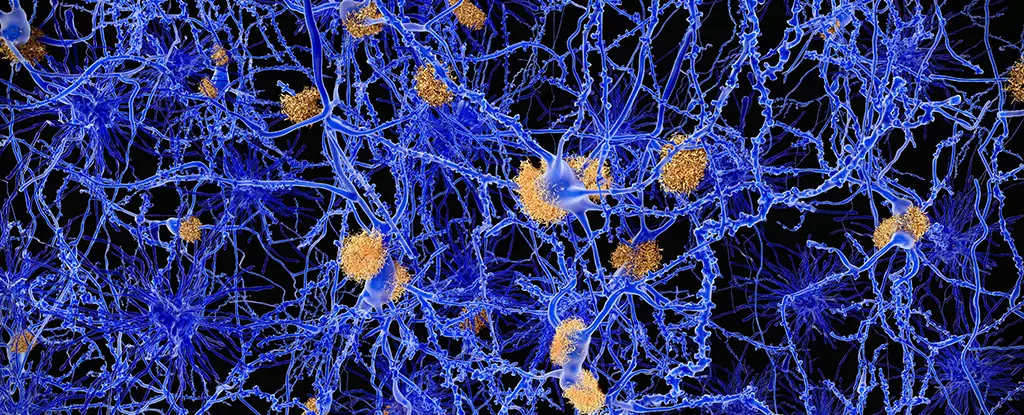Neurodegenerative diseases like Alzheimer’s have become a global crisis, afflicting millions and placing unsustainable burdens on healthcare systems worldwide. With over 10 million new dementia diagnoses every year, the urgent need for innovative treatments is palpable. As we witness an aging population, the fear surrounding Alzheimer’s and its debilitating effects looms large, creating a race not just for treatment options, but for a real cure. In this context, the emergence of a potentially groundbreaking nanomaterial designed to combat the formation of toxic plaques could be a game-changer. Yet despite the promise, we must tread carefully, as the implications pervade not only biology but ethics and healthcare too.
Understanding the Science Behind the Breakthrough
Recent research has developed a unique nanomaterial that may prevent the aggregation of amyloid beta proteins, notorious for their role in Alzheimer’s pathology. Fabled materials scientist Samuel Stupp describes how these misfolded proteins create destructive fibers that invade neurons, leading to severe toxicity. The researchers have ingeniously combined peptide amphiphiles—molecules that harmonize with both lipids and water—with trehalose, a naturally occurring sugar known for its stabilizing properties. This combination creates a framework that traps problematic proteins in their formative stages, thus preventing them from forming harmful aggregates.
However, while such scientific exploration evokes excitement, it’s essential to delve deeper into the uncertainties this innovation brings. Can we truly navigate the unknowns associated with manipulating natural protein behaviors? The potential risk of unforeseen side effects must be examined rigorously before heralding this as a definitive solution to neurodegeneration.
The Two-Sided Sword of Innovation
The narrative surrounding breakthrough medicine often oscillates between optimism and skepticism. Innovations are inherently disruptive; they bring the potential for significant advancements along with a suite of ethical dilemmas and unforeseen consequences. Public trust in medicinal advancements is fragile, especially given the tumultuous history of pharmaceutical developments marred by side effects and malpractice.
The application of nanotechnology in treating Alzheimer’s surfaces ethical considerations related to accessibility and the commodification of healthcare. Will a revolutionary nanomaterial be available to those who need it most, or will it remain a luxury accessible only to a select few? As financial implications intertwine with this profound medical science, we must not allow corporate interests to dictate who can access life-altering treatments.
The Path Forward: Research and Real-Life Application
While early-stage research into these specially designed nanomaterials shows promise in stabilizing misfolded proteins, the journey doesn’t culminate here. Comprehensive studies must explore the long-term implications of deploying these nanomaterials in real-world healthcare settings. The interdisciplinary collaboration between chemists, biologists, and clinicians is crucial to navigate the myriad of variables at play.
Moreover, the field must engage with patients and advocacy groups to ensure that this potent technology is applied with transparency and ethical consideration. Truly groundbreaking treatment requires a holistic approach, embracing the perspectives of those most affected by these conditions. It is not just about developing scientific innovations; it is about embedding these advances within a fair and just healthcare system.
Embracing Hope Amid Uncertainty
The significant potential of this nanomaterial offers a glimmer of hope in an otherwise bleak landscape dominated by neurodegenerative disorders. Yet, as society anticipates possible solutions, we must not lose sight of the intricacies involved in medical innovation. Leveraging nanotechnology could indeed alter the trajectory of Alzheimer’s research if approached carefully with a focus on both ethical implications and accessibility.
As we stand on the brink of what could be revolutionary advancements, we must continuously ask the hard questions associated with our quest for solutions. Innovating within neurodegenerative research is commendable, but it should never come at the cost of ethical integrity or patient access. The balancing act of progress is delicate, and with the right considerations, we could foster a brighter future for generations to come.

Leave a Reply